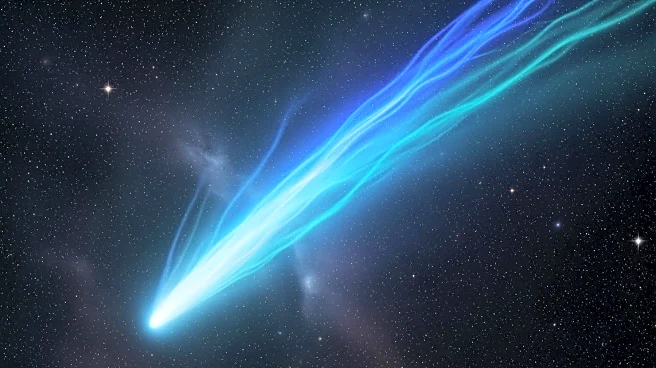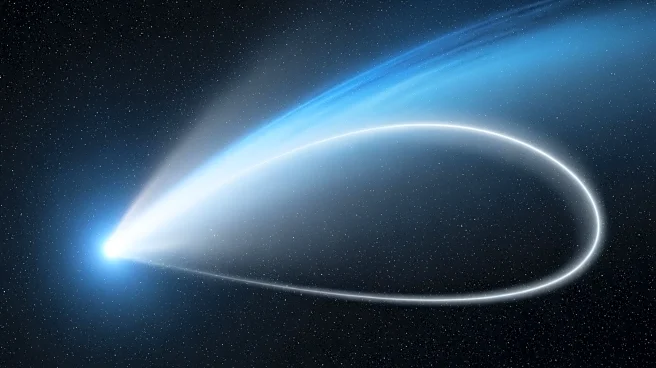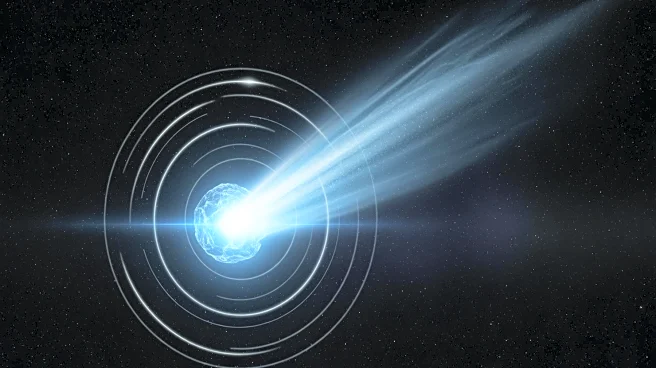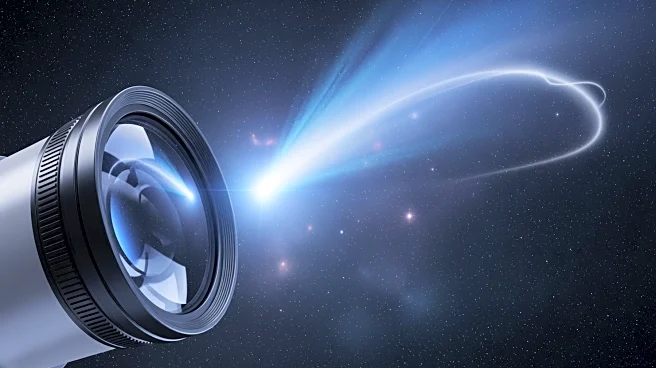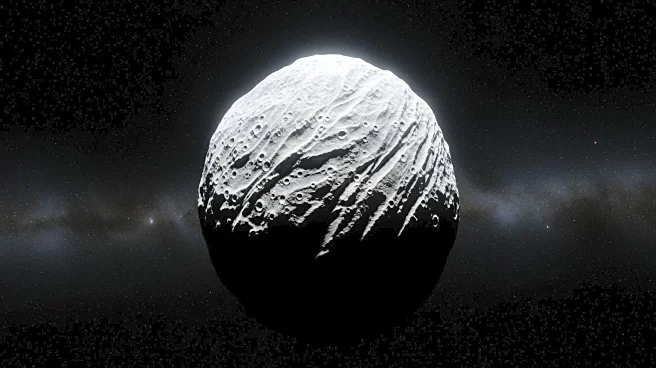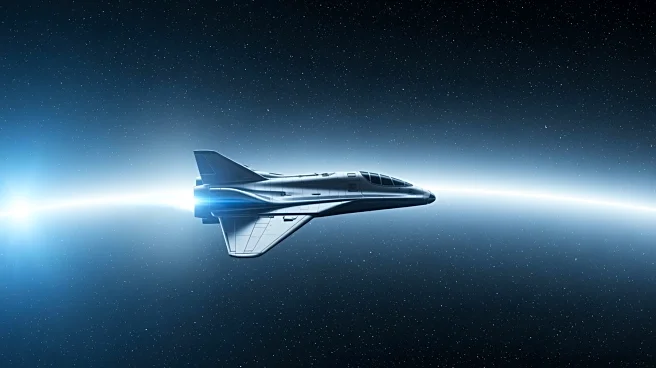What's Happening?
NASA is preparing to release high-resolution images of the interstellar comet 3I/ATLAS, captured by the Mars Reconnaissance Orbiter's HiRISE camera. This comet, the third interstellar object to visit our
solar system, has been closely monitored by scientists due to its size and trajectory. The images were taken in early October but delayed due to a government shutdown. The Virtual Telescope Project will host a livestream event, allowing viewers to observe the comet as it moves away from the Sun. The comet will be visible above the eastern horizon, traveling through the constellation Virgo.
Why It's Important?
The release of these images is significant for the scientific community, as it provides an opportunity to study an interstellar object in detail. Understanding the nature of 3I/ATLAS could offer insights into the composition and behavior of comets from outside our solar system. The event also highlights the importance of prioritizing scientific research over bureaucratic delays, as noted by Harvard astrophysicist Avi Loeb. The comet's trajectory and size have sparked various theories, including speculation about its potential as an extraterrestrial spacecraft, underscoring the need for accurate data to dispel myths and inform public understanding.
What's Next?
NASA's release of the images is expected within days, providing the highest resolution views of 3I/ATLAS to date. This will likely lead to further analysis and discussion among scientists regarding the comet's characteristics and origin. The livestream event by the Virtual Telescope Project will offer real-time observation opportunities, potentially increasing public interest and engagement in astronomical phenomena. As the comet continues its journey, researchers will monitor its path and any interactions with other celestial bodies, contributing to ongoing studies of interstellar objects.
Beyond the Headlines
The delayed release of the images due to a government shutdown highlights the impact of political decisions on scientific progress. It raises questions about the prioritization of science in government agendas and the potential consequences of bureaucratic inefficiencies. The comet's journey through the solar system also serves as a reminder of the vastness and complexity of space, encouraging a broader appreciation for astronomical research and exploration.




